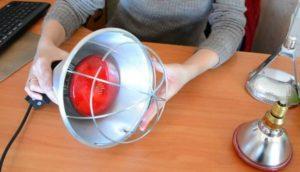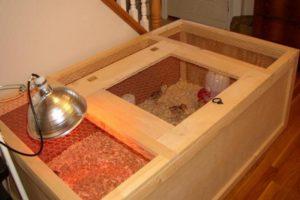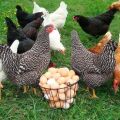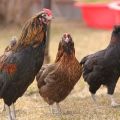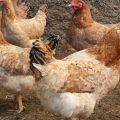Features of the cage keeping of chickens at home, size and density
Keeping chickens in specially equipped cages is a suitable option for farms with large livestock. You can build cages for layers yourself, or you can purchase and install ready-made structures. While adhering to the cage of chickens, a number of rules will need to be taken into account in order to ensure a comfortable existence for the birds.
Features of the cage keeping of chickens
To properly organize the keeping of birds, you need to study the features of their life. One of the main features of domestic chickens is the need for free range. The egg production index directly depends on the physical activity and the duration of the birds' stay in the open air. A courtyard should be built next to the chicken coop and birds should be released periodically into it.
In conditions of cage placement, chickens will not be able to fully reproduce. Since, due to their aggressive nature, it is not recommended to restrict the freedom of the roosters by adding them to the females, it is worth releasing them into the courtyard area at the same time as the laying hens.
When choosing the considered method of keeping birds, you also need to take care of meeting basic needs, including ambient temperature, lighting and ventilation. When creating conditions, you need to take into account the age of the chickens, since young animals and adults have their own requirements for proper development.
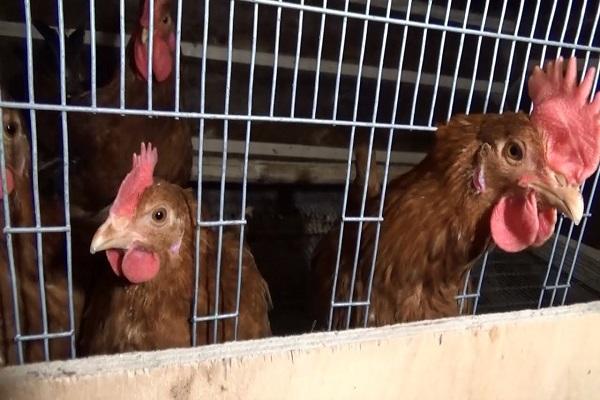
Advantages and disadvantages
The proliferation of cellular content is due to a large number of positive aspects. The list of main advantages includes the following:
- The ability to breed chickens in a small area or in the same room with cattle.
- Ease of daily care, feeding, waste collection and egg collection.
- Convenient control of the condition of birds, inspection and rejection of unusable individuals due to the fact that the chickens are constantly in the field of view.
- Protection from interaction with wild birds that carry dangerous infectious diseases.
- Saving feed, achieved by external fixation of the feeder, which eliminates the scattering of food.
- Separation of chicks and adult chickens in different locations.
- Convenience of collecting eggs from special trays, which minimizes the likelihood of pecking and crushing.
In addition to a number of advantages, several negative characteristics can be distinguished. In particular:
- The limited space will restrain the movement of the chickens. Inactivity and occasional outdoor exercise negatively affect productivity.
- To provide all the convenience for birds, you will need to install automatic feeders and drinkers, as well as maintain a certain temperature. This will increase labor and material costs.
- Certain chicken breeds are not genetically inclined to be kept in confined spaces.
- A short exposure to the open sun reduces resistance to disease, which is why the condition of some layers is depressed.
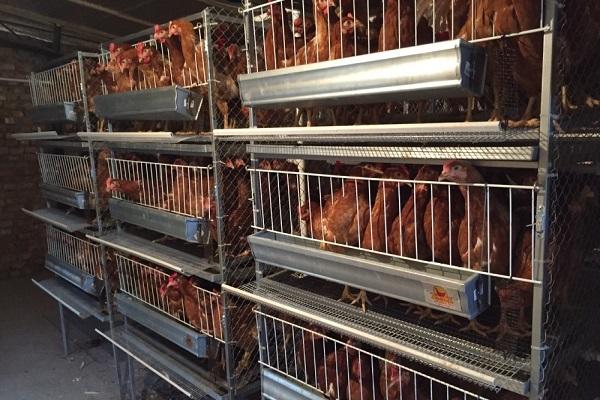
How to choose the right cage?
When choosing a cage, it must be borne in mind that layers are characterized by low mobility and relatively small size. The most suitable material for the construction is metal mesh. The dimensions of the net should be selected so that birds cannot fall out of the cell. The floor inside the cage should be at an angle of 7-9 degrees. The optimum space between the floor and the waste container is at least 12 cm.
Breeds suitable for cage keeping
For growing in cages, chicken breeds are more suitable than others for egg directions. Among them are the varieties Hisex Brown, Leghorn and Loman Brown. These breeds are easily adaptable to new environmental conditions, and the productivity indicator does not deteriorate with the constant presence in an enclosed space.

How to make a cage with your own hands
To take into account your own requirements for the place of keeping laying hens, you can make a cage yourself. During the construction process, you will need to draw up a drawing indicating the dimensions of the structure, calculate the planting density and provide for the arrangement for the comfortable existence of birds.
Dimensions
Regardless of the material from which the cage will be made, there are standard dimensions for a four-tier structure. Width is 145 cm, height - 180 cm, depth - 70 cm. The bottom of the cage is made of mesh material with a line diameter of 2.5 mm.
Under the base, place a waste collection tray at a distance of 8-10 cm. The front wall is made of a mesh with a thicker diameter than the bottom, and an inlet is cut out.

Stocking density
The number of chickens in one cage depends on the free space inside. In order for the birds to develop and lay eggs correctly, at least 0.2 squares are required for one adult. As a rule, the stocking density does not exceed 5-6 animals per structure.
If you need to transfer birds from free-range conditions to a confined space, you should double the internal area. Lack of freedom after free living can lead to a halt in laying. Layers should be taught to new places gradually, reducing the area over time. It is recommended to keep birds of the same age and breed in one cage.
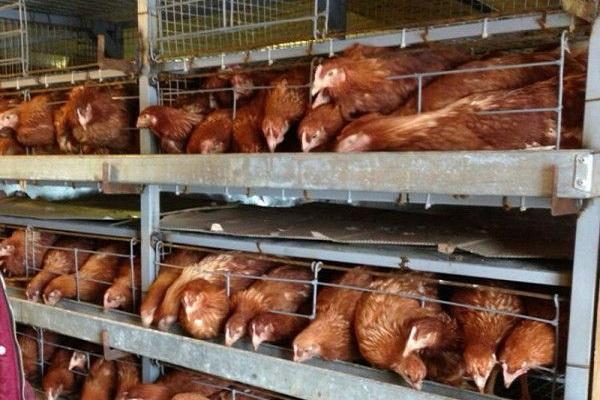
Lighting and temperature
Artificial light sources need to be installed inside the cells. The presence of lighting is important for chickens of egg breeds and affects productivity. Lighting should be uniform, dark or too bright corners are unacceptable. Rheostats allow you to create smooth lighting, which adjust the brightness level and gradually begin to illuminate the space.
The microclimate in cells also plays an important role. The optimal temperature indicator for layers is in the range of 20-27 degrees. Suitable atmospheric humidity is 50-70%.
Necessary equipment for arranging cages
Equip chicken cages with a basic set of equipment.Birds need feeders, drinkers, ventilation, lighting and heating devices.
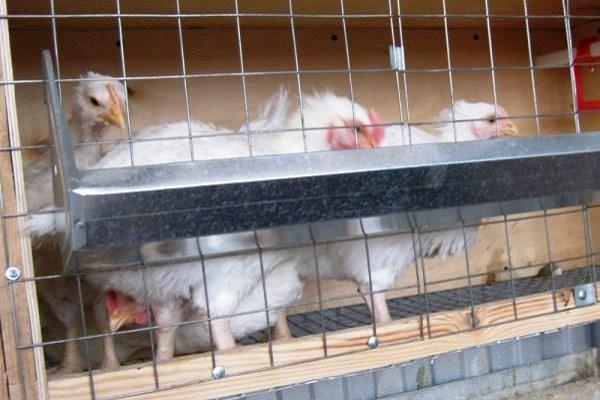
How to properly keep chickens
It is necessary to keep laying hens at home taking into account a number of rules. In order for birds to actively develop and maintain a high rate of productivity, an integrated approach will need to be provided.
Nutrition
You can feed the birds with ready-made combined feeds that contain all the necessary nutritional components, or with natural products. In the diet of birds, you can include corn grits, grated vegetables, herbs. When using compound feed, pour it into the feeders as it is consumed. Other foods should be given to birds several times a day on a schedule.
Chickens should have clean water in drinking bowls on an ongoing basis.
Cage cleaning
Shaking droppings out of trays and basic cleaning of cages is recommended daily. The presence of dirt, falling feathers and other waste leads to the spread of parasites and diseases of birds. Once a quarter, you should perform a large-scale cleaning of the entire chicken coop, purify the air and disinfect the room.
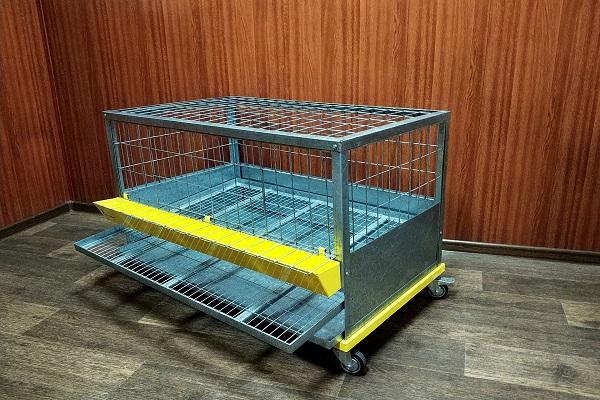
Prevention of diseases and parasites
Most chicken diseases and parasite infestations occur due to violation of conditions of detention. As a preventive measure, it is recommended:
- constantly monitor the condition of the birds;
- with slow growth and thinness, increase the content of vitamins in the feed;
- keep the chicken coop clean;
- carry out protective treatment of chickens.
Ventilation
Ventilation in the house helps to bring in fresh air and eliminate unpleasant odors. Usually ventilation is installed during the construction phase of the chicken coop. In the absence of a hood, it is necessary to regularly ventilate the room in a natural way.
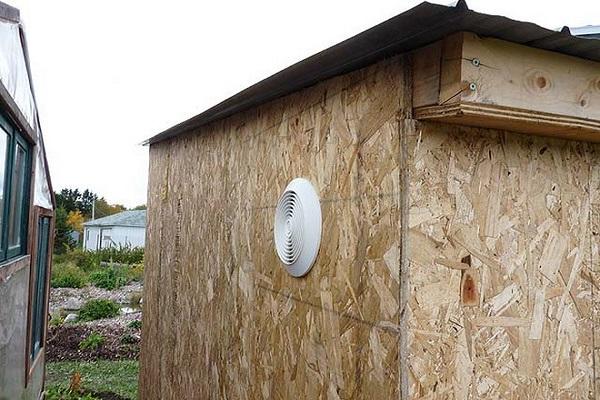
Additional tips for beginner breeders
With little experience in keeping chickens, poultry farmers often face common problems. To avoid mistakes, you should familiarize yourself with the recommendations for breeding birds.
Cellular fatigue
As a result of being constantly in a confined space, some chicken species may develop cell fatigue syndrome. The consequences of the syndrome are muscle paralysis and osteoporosis. For treatment, the birds are given dietary calcium and the length of time they spend outdoors.
Panic
After placing chickens in a closed cage, they may experience panic, which manifests itself in the form of restless behavior. In this situation, you need to gradually accustom the birds to new conditions so as not to create stress.
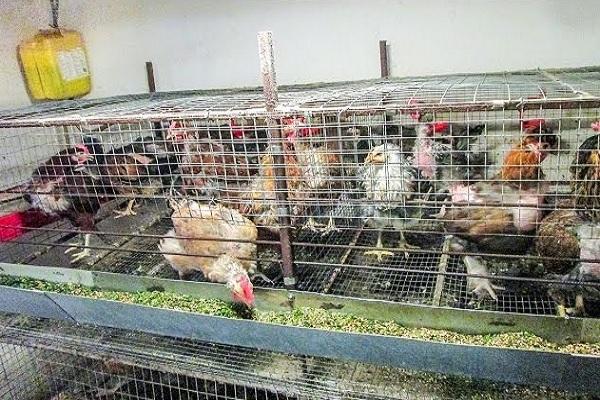
Cannibalism
Cannibalism is a pathology in the behavior of chickens and consists in an aggressive attitude towards fellow chickens and damage to eggs. To avoid the negative consequences of cannibalism, aggressive individuals should be raised in separate structures.
Broken wings
The collision of birds with various obstacles often leads to the fracture of the wings. It is not recommended to treat fractures on your own, as this process requires special skills. If the wings are broken, you should seek help from your veterinarian.
Rickets
The reason for the development of rickets is an unbalanced diet of birds. The main control measure is to revise the diet. As a result of rickets, the elasticity of the bones can increase and they cannot bear the weight of the chicken.
